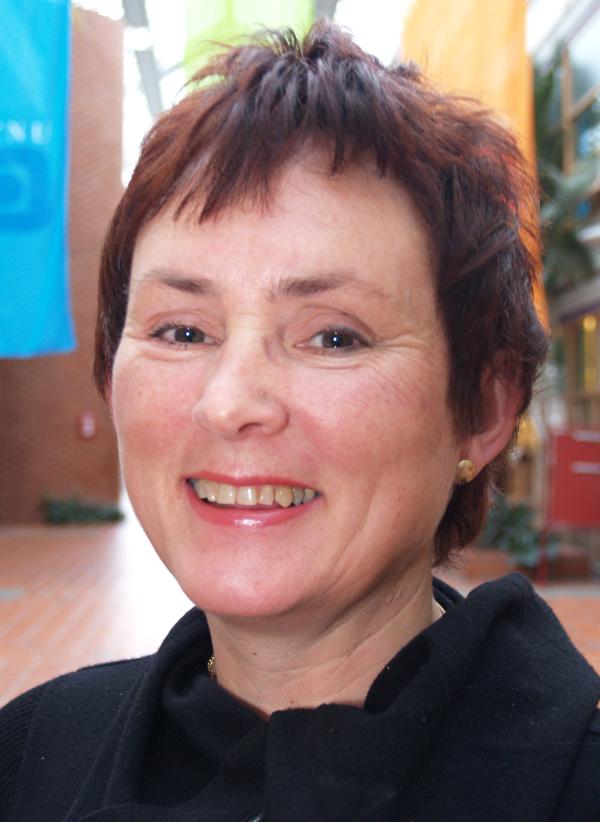
Berit Gullikstad is a researcher at the Center for Gender Studies at The Norwegian University of Science and Technology (NTNU). She has looked at a large selection of newspaper articles, primarily from the period of January 1 to April 1 2004, when the debate was at its most intense.
Men strongly represented
– One unusual aspect was that so many men participated in the debate. This is rather uncommon in debates surrounding women’s issues, says Gullikstad.
Her main focus has been on the use of gender equality as part of the argumentation.
– Both advocates and opponents of a ban argued that it was a matter of gender equality, and used the same political language. But on closer examination the debaters take “gender equality” to mean different things and do not define their interpretation of the term, she explains.
The freedom to choose
Both sides argued that women ought to be free to decide for themselves. But what does that mean?
– Advocates of the ban claimed that Muslim women are forced to wear a headscarf, and that a ban would give them the right to choose. The opponents, on the other hand, said that women with hijab should be considered as independent individuals who make their own choices and deserve respect. From this viewpoint, a ban would deny women the right to decide for themselves, says Gullikstad.
The debate clearly accentuates the perception of gender equality as a trademark of the Norwegian identity, says Gullikstad.
– Categorisations were central to the debate. While advocates of the ban assumed the position of “free and equal”, women with hijab were stamped as “subdued” and feeble. The women argued that they too were free, and stressed that a ban in reality would prevent them from working. Filing complaints when suspended from jobs is a testament to the women’s drive and awareness of their rights, says Gullikstad.
The right to work
The right to be economically independent has traditionally been important to the Norwegian women’s movement and closely linked to the notion of gender equality. Gullikstad is surprised that this element received so little attention throughout the debate, despite the fact that what sparked the Norwegian debate was the suspension of Ambreen Pervez. Pervez was fired from a furniture store on the grounds that her headscarf violated their dress code policy. She filed a complaint with the Equality and Anti-Discrimination Ombud and won her job back.
– Many self-proclaimed feminists avoided the question of what a ban would imply for Muslim women’s economic situation. This makes me wonder: Has economic independence lost its importance to ethnic Norwegian feminists? If so, why, asks Gullikstad, who presents one theory: The debate over hijab may suggest that sexuality currently is the most important gender equality issue.
Sexuality = femininity
According to Gullikstad, sexuality was a focal point on both sides of the debate. Those in favour of the ban argued that the headscarf is an unacceptable means of curbing women’s sexuality, and hence oppressive.
The opponents, not least Muslim women, claimed that the headscarf is liberating. With the headscarf you are seen as a person, not mainly as an object of desire.
There is a similar understanding of sexuality in the debate over teenage girls’ way of dressing. Some schools want to ban see-through trousers and bare stomachs, both to protect the girls and to avoid male teachers feeling like voyeurs.
– With this kind of argumentation sexuality equals women’s skin, hair and figure. It is taken for granted that men feel desire when met with this femininity. Hence, sexuality is turned into “nature” both for women and men. Men’s sexuality is viewed as outside their own control, and something women must consider when they choose outfits, says Gullikstad.
What is equalized sexuality?
Her analysis of this issue has shown that the question is how to do sexuality in order to be categorised as “equal, claims Gullikstad.
– How available can and must the female body be in order to be “equal” and at the same time “appropriate”? One of the battles of the debate was where this line should be drawn, she says.
– I find it particularly interesting that, except for the issue of women in leading positions, the debate surrounding gender equality today revolves primarily around ”the others”. As my analysis of the debate over hijab shows, this is an area where our society still has a lot of work to do with regards to gender equality.
Translated by Vigdis Isachsen
Post.doc. at the Center for Gender Studies at NTNU.
Her analysis of the debate over hijab is a sub-project in her post doc. project «Når likestilling blir ulikhet. Kjønn, etnisitet og seksualitet i arbeidslivet.» (When gender equality becomes inequality. Gender, ethnicity and sexuality in working life), which is connected to the project «Likestilling – en grense mellom ’oss’ og ’dem’?» (Gender Equality – a line between “us” and “them”?).
The project is financed by The Research Council of Norway and their program «Kjønnsforskning: kunnskap, grenser, endring» (Gender Studies: Knowledge, limits, change).
